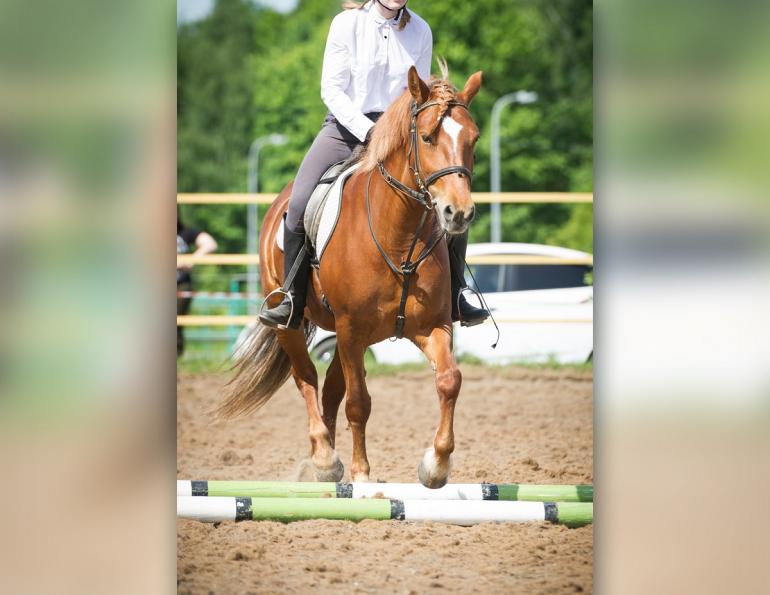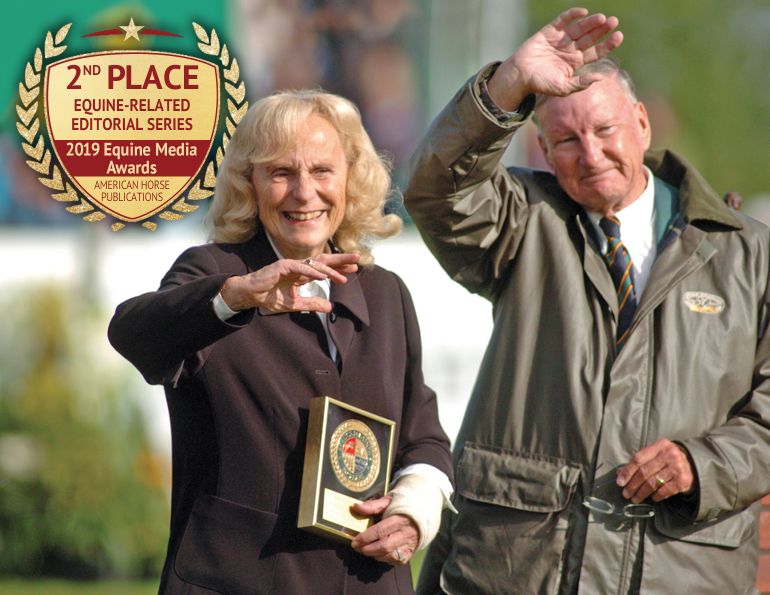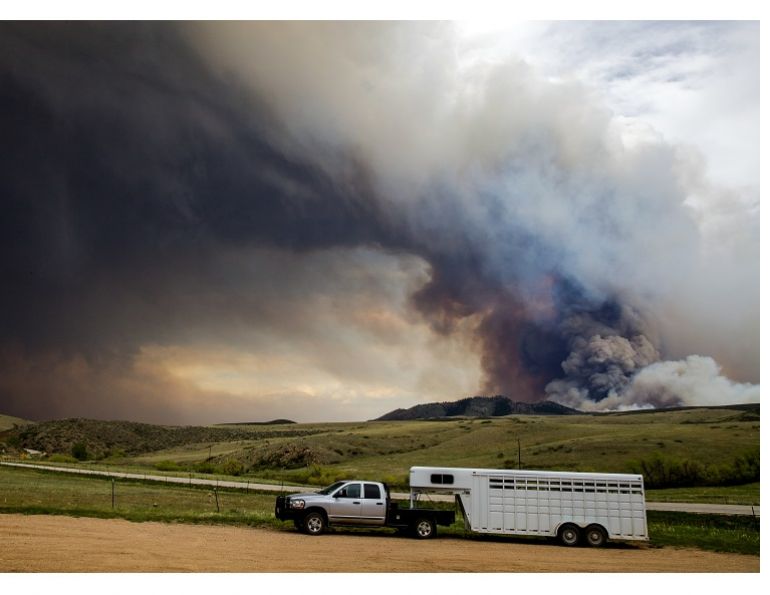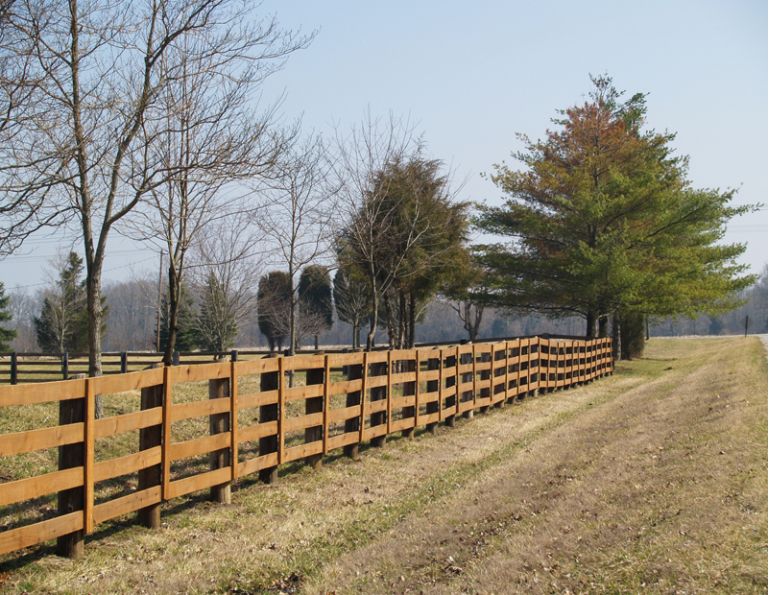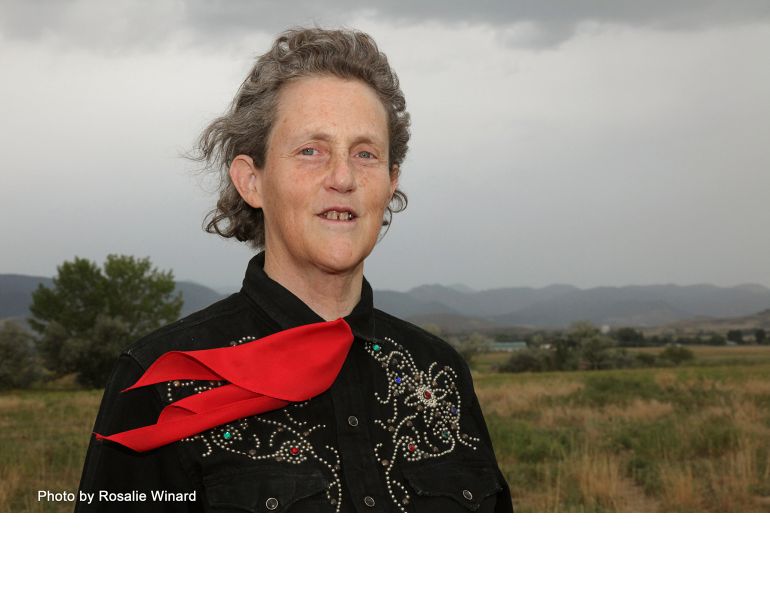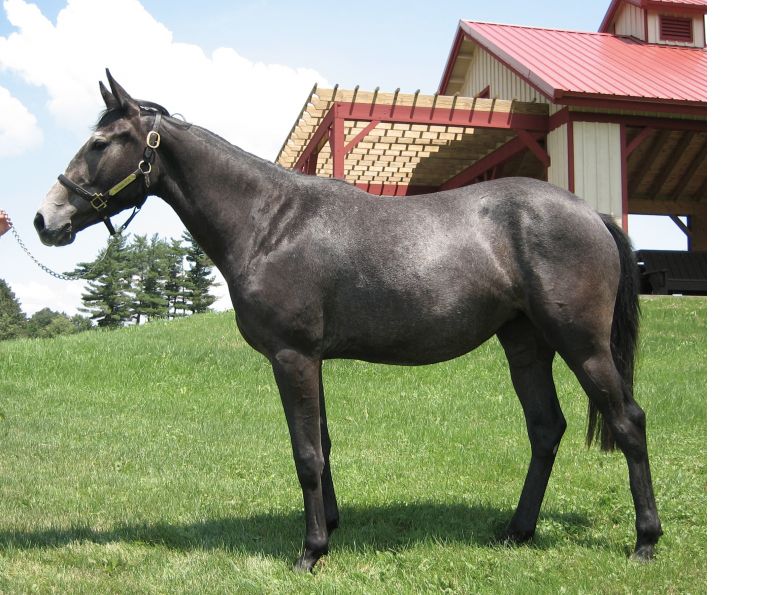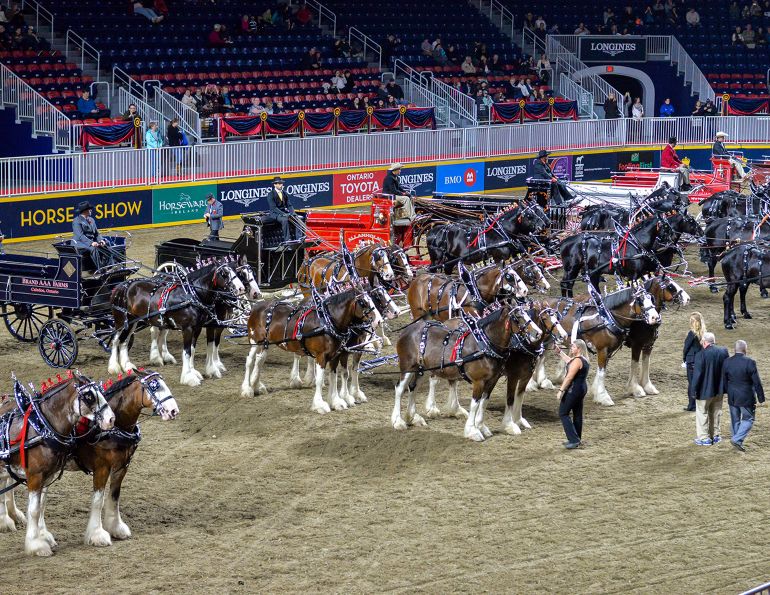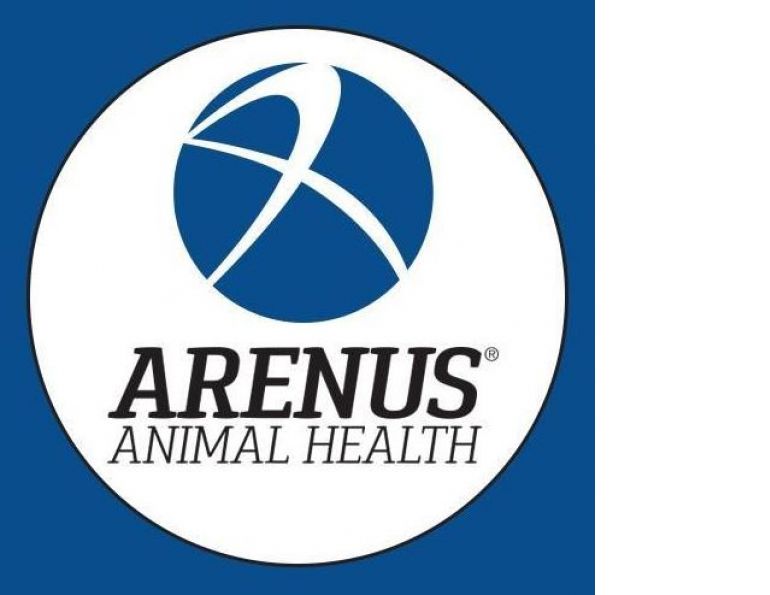By Jess Hallas-Kilcoyne
Facilities such as Caledon Equestrian Park, in Palgrave, Ontario, and Spruce Meadows, in Calgary, Alberta, provide equestrian athletes with a venue to develop and showcase their talents, and horse fans with entertainment. But what do these sport competition sites contribute to the non-equine community?
In 2010, a study was commissioned to evaluate the economic contribution of the horse industry to the Town of Caledon, and the additional economic contribution made by the Caledon Equestrian Park (CEP) specifically. Entitled Economic Contribution of the Horse Industry – Town of Caledon & Caledon Equestrian Park, the study’s results are generated from data provided by the CEP, and from information gleaned from interviews completed during a telephone survey for the Equine Canada commissioned study, 2010 Canadian Horse Industry Profile Study: The State of the Industry. The analyses derived from the data indicate that the horse industry and the CEP make a significant economic contribution each year to the Town of Caledon.
Although no similar study has been prepared to identify the total economic contribution of Spruce Meadows, the international show jumping venue has conducted research into specific areas to which it contributes. The findings confirm that Spruce Meadows does indeed contribute a significant amount to the provincial economy.
The two facilities and their respective economic contributions cannot be compared; they operate on very different scales. However, they serve to remind us of the value of the equine industry in Canada, not only to the horse community, but to the nation as a whole.
|
Caledon Equestrian Park contributes over $110 million each year to the local economy and has been named as the official venue for equestrian events at the 2015 Pan American and Para Pan American Games. |
Caledon Equestrian Park
A major equestrian competition facility situated within the Town of Caledon, in Palgrave, Ontario, the Caledon Equestrian Park (CEP) has not achieved the same international status that Spruce Meadows boasts, but is well on its way, having been named the official venue for the equestrian events at the 2015 Pan American and Para Pan American Games. Currently the CEP hosts a total of sixteen equestrian events annually, eight international show jumping events, including the Canadian Show Jumping Tournament each September, and eight dressage, Trillium, and Quarter Horse events.
These events are held over 67 days and attract an average of about 2500 unique horse-rider pairs annually. On average, these pairs have been found to visit the CEP for four competition events each year.
Over $200,000 in prize money is offered at the Canadian Show Jumping Tournament, which sees an average of 800 horses competing in 105 classes. The largest, most prestigious equestrian competition of the year held at the CEP, the Canadian Show Jumping Tournament does not have the same international attendance as Spruce Meadows, but nonetheless attracts local stars such as Ian Millar and Yann Candele.
The location of CEP, a convenient 45 minutes north of Toronto, cements its position as one of the primary competition venues for equestrian sport in Ontario.
Of the 2568 individual competitors that competed in equestrian events at the CEP in 2010, more than 85 percent hail from a broad region surrounding the Park. This CEP Catchment Area encompasses the cities of Toronto, Hamilton, Kitchener, Peterborough, Brantford, and other Greater Toronto Area municipalities.
|
Caledon Equestrian Park's tournaments attract top riders such as Ian Millar, shown riding Star Power to victory in the $90,000 RAM Equestrian Grand Prix during the CSI** Summer Festival at Caledon Equestrian Park in August 2011. |
The Caledon study focuses on the expenditures of these 2568 competitors in three areas:
• the annual cost of keeping and caring for a competition horse on farms within the CEP Catchment Area, which includes such expenses as tack and equipment, transportation, and the cost of maintenance of horse-related infrastructure on horse properties;
• the cost associated with a rider’s preparation for competition, including association membership fees and riding lessons or coaching; and
• the cost of competing at the CEP, which includes entry fees, on-site stabling, trailering to shows, accommodation during competitions, and the operational costs for the CEP as a competition venue.
The research indicates that a horse which is primarily used in the sport competition sector has a higher capital investment associated with it, and requires a larger annual expenditure when it comes to training and preparation for competition. This higher expenditure translates into a higher economic contribution from competition activities.
The total on-farm expenditures (expenditures relating directly to the care and husbandry of horses on properties, and the training and preparation of horse and rider for competition) for the care and husbandry of horses competing at the CEP come to approximately $35 million annually.
On-farm activities support the equivalent of 521 full-time on-farm jobs in the area at an average annual salary of $22,107.
Off-farm expenditures (the costs relating to participation in competition activities at the CEP, and the costs to run competitions at the CEP) total around $15.8 million per year.
The total on-farm and off-farm expenditures for horses competing at the CEP in 2010 was $50.8 million.
According to the study, “the induced employment supported by competitors at the CEP generates an additional 501 full-time jobs – an annual value of $11.5 million.”
This puts the total annual expenditures for competitors at the CEP at roughly $62.3 million. The ripple, or multiplier, effect of these expenditures determines that every $1 in expenditures results in an additional $0.78 being contributed to the economy. From these figures, the total economic contribution made by the Caledon Equestrian Park is an estimated $110.9 million per year.
|
Established in 1976, today Spruce Meadows is ranked the number one show jumping venue in North America and one of the best in the world. |
Spruce Meadows
Currently ranked as the number one show jumping venue in North American by the North American Riders Group, Spruce Meadows, located just outside of Calgary, Alberta, is a world-class equestrian facility. Each year the venue hosts six FEI sanctioned tournaments, with a total of 16,000 jumping rounds, and an additional ten Equine Canada events. Spruce Meadows’s series of FEI tournaments, culminating in the famous Masters Tournament each September, attracts top show jumping riders from around the world, making Spruce Meadows a truly international venue and tourist attraction.
“We have a reasonably passionate fan following in Calgary,” says Ian Allison, Senior Vice-President of Spruce Meadows. “More people see international show jumping each year at Spruce Meadows than see CFL football.”
Approximately 500,000 fans visit Spruce Meadows each year as spectators at equestrian events. A total of 255,000 fans attended the Masters Tournament in 2011, with two consecutive record-breaking days on the Saturday and Sunday of the tournament, with 79,489 and 89,632 spectators respectively.
Approximately 64 percent of the people visiting Spruce Meadows are from within 200 kilometres of Calgary, with the remaining 36 percent forming the “long-haul” audience. The contribution made to the local economy by the latter group, based on their patronage at local hotels, restaurants, and other businesses, is slightly more than that of the former.
The fans aren’t the only ones who generate revenue for these local businesses. The competitors themselves, along with their entourages, also create income for Calgary business owners.
While their Equine Canada sanctioned tournaments draw a more regional crowd, Spruce Meadows’s census on competitors at their FEI sanctioned tournaments shows that 85 percent of competitors at these events come from outside the area. This results in increased economic benefits for Calgary and the surrounding area.
“If you have 1000 horses coming to Spruce Meadows for five weeks, most of them have about five people around them (rider, vet, farrier, groom, etc.),” Allison says. “It equates to about a 5000 person convention coming to Calgary for five weeks, which is a very big boost to hotels, restaurants, and rental properties and cars.”
According to Allison, Alberta calculates the full-trip spending of this group of horse show participants at a total of approximately $88.6 million.
“Then there’s something called tourism industry output for the province of Alberta,” Allison continues. “That goes into the secondary aspects of tourism: employment at restaurants, hotels, catering, etc., and that equated to $208.4 million.”
Finally, he gives the figure of the gross domestic product contribution made by participants in events at Spruce Meadows to the province of Alberta as roughly $110 million.
The sum of these figures is a whopping $407 million.
However, Allison points out that these numbers don’t reflect the total economic contribution made by Spruce Meadows.
Certain things would not factor into the province’s equation, such as the 12-plus charter airplanes that come from different places with horses on them. “A lot of the airport fees and fuel are paid at the other airports, whether it be Frankfurt, or Guadalajara, or Hamilton,” Allison adds.
But Spruce Meadows benefits Calgary in ways other than those relating to economic contribution. In addition to the 500,000 fans that attend the tournaments each year, around another 100,000 people visit the grounds throughout the year.
“When Spruce Meadows was first built, it was quite a ways from the City of Calgary,” Allison says. “Now we are completely enveloped by the city of Calgary, somewhat as an oasis and a year-round campus/park destination for people to walk their dogs and eat picnics. It has assisted us greatly, I think, to have an open door policy when it comes to skating on the pond, [viewing] the Christmas lights, etc. The stables are open and people can stop by and visit the horses. [The people] have really embraced it and respected it as if it was their own.”
In recognition of the enormous contribution made by Spruce Meadows to both the local community and the international equestrian world, founders Ron and Marg Southern were inducted in 2006 into Canada’s Sports Hall of Fame, an honour usually reserved for athletes. In March 2012, Ron and Marg were also honoured as recipients of Queen Elizabeth II Diamond Medals.
The Caledon Equestrian Park and Spruce Meadows serve as examples of the many different ways equestrian competition facilities benefit the equine and non-equine communities alike. From contributing to the local and provincial economies, to promoting equestrian sport, to simply providing a green space for locals to enjoy, these venues give back in a multitude of ways.
Main Article Photo: Robin Duncan Photography - The six FEI sanctioned show jumping tournaments that are held each year at Spruce Meadows attract top riders from around the world.



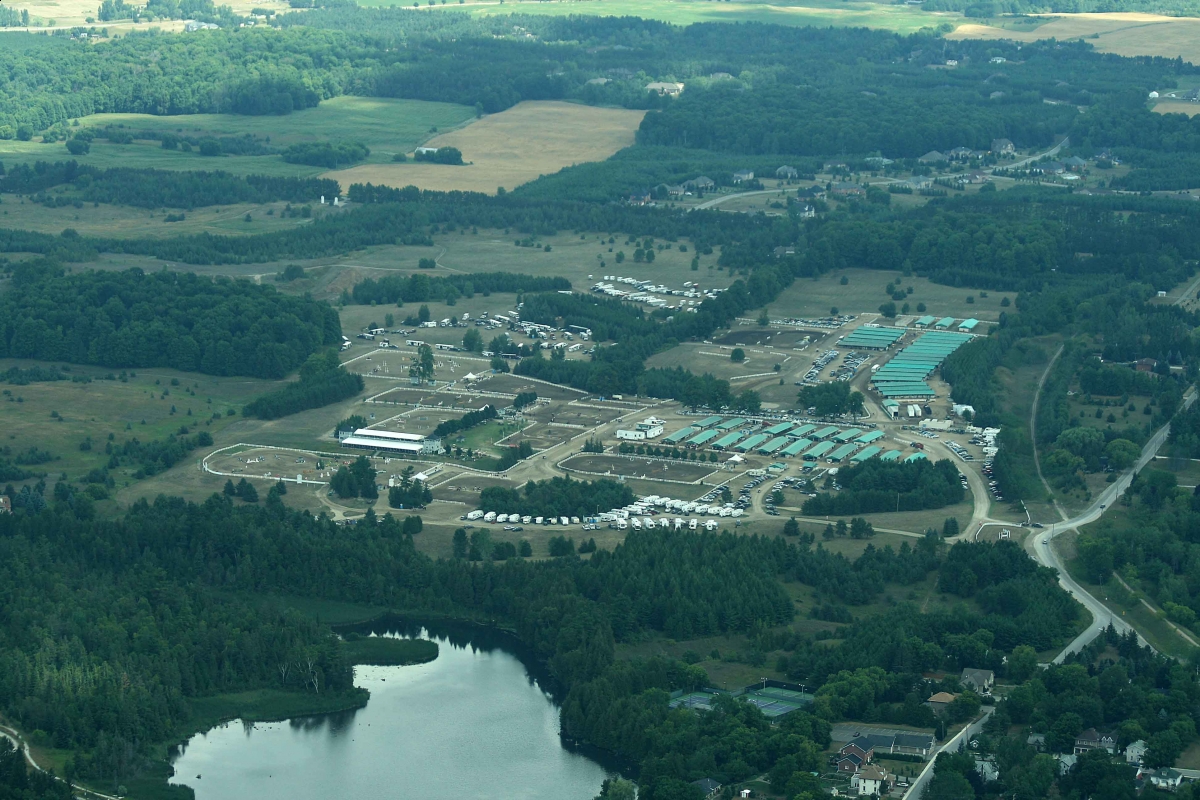 Photo courtesy of Caledon Equestrian Park
Photo courtesy of Caledon Equestrian Park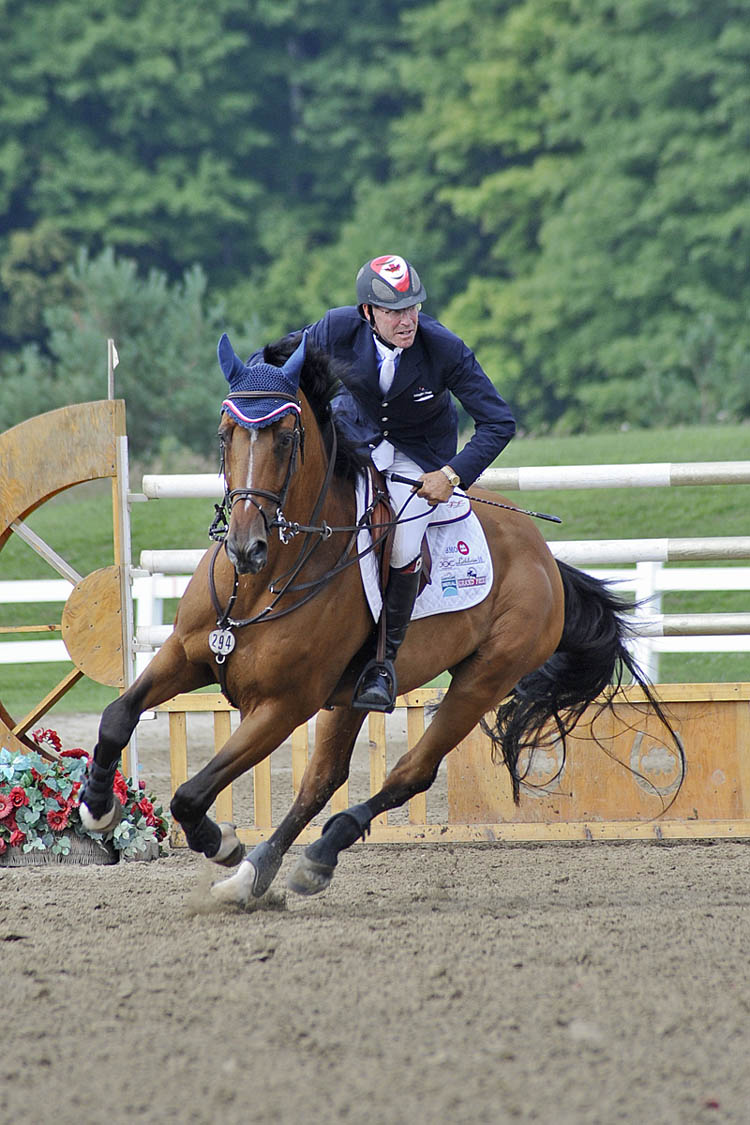 Photo: Shootphoto.ca
Photo: Shootphoto.ca